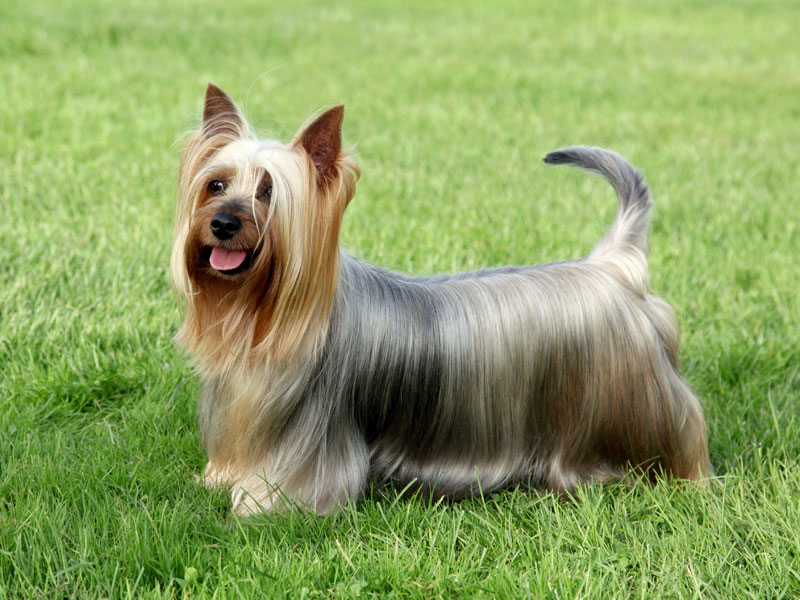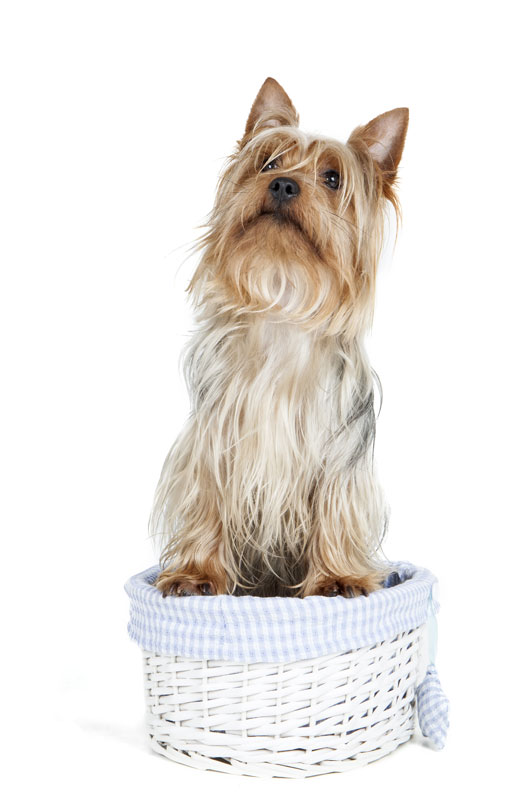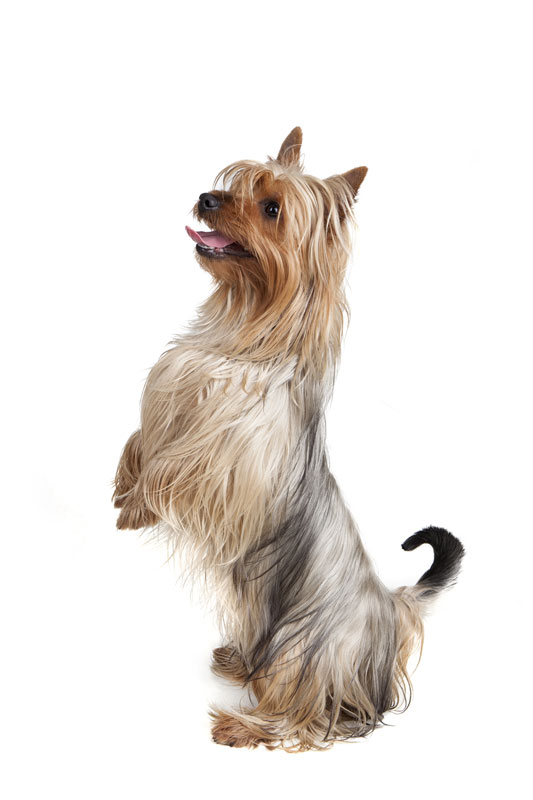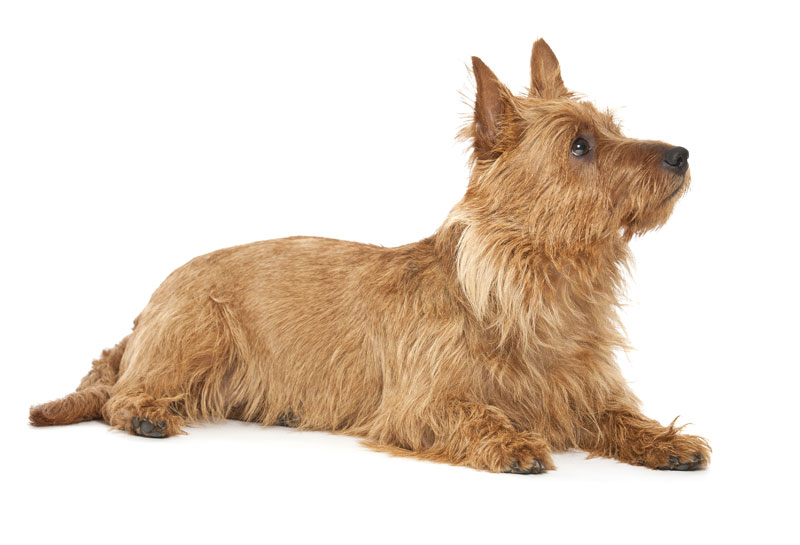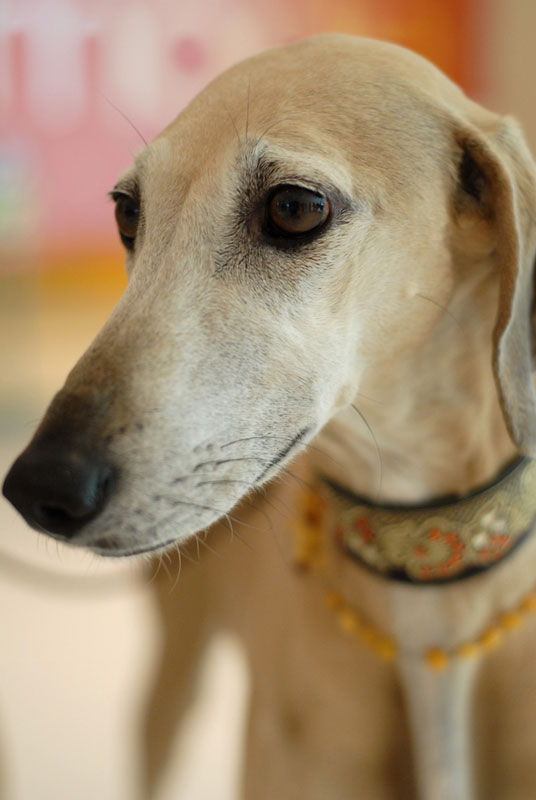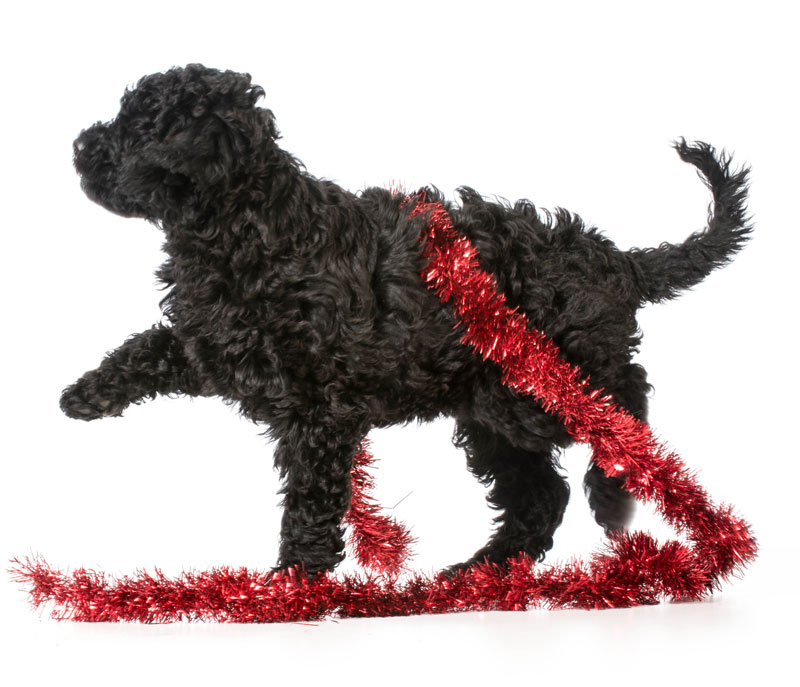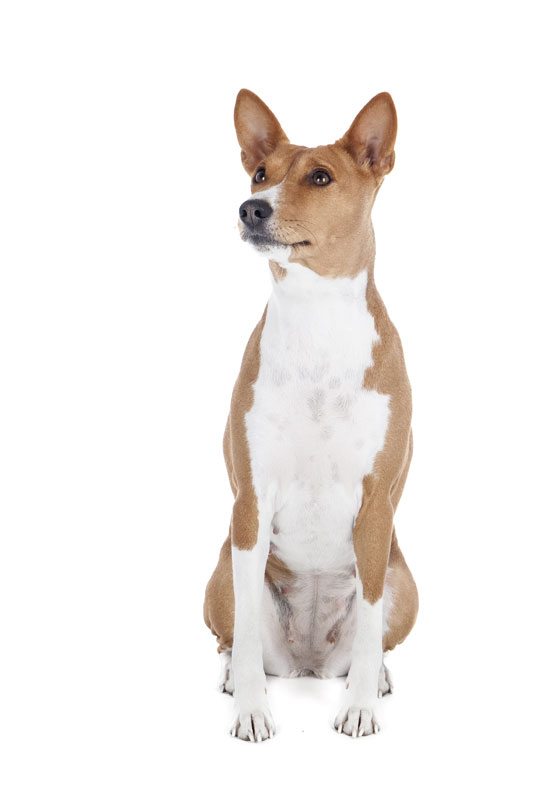Super User
Australian Silky Terrier
The Australian Silky Terrier is a small dog breed of dog of the terrier dog type. The breed was developed in Australia, although the ancestral types and breeds were from United Kingdom. It is closely related to the Australian Terrier and the Yorkshire Terrier. The breed is called the Silky Terrier in North America, but is called the Australian Silky Terrier in its country of origin and in the rest of the world.
Austrian Black and Tan Hound
The Austrian Black and Tan Hound is a dog breed of dog originating in Austria.
Austrian Pinscher
The Austrian Pinscher (Österreichischer Pinscher, FCI No. 64) is a medium large dog breed of pinscher-dog type dog from Austria, where dogs of the type were originally Working dog, keeping barns free of rats and acting as home guards, livestock guardian dog, and drovers. The name originally given to the breed in 1928 was the Österreichischer Kurzhaarpinscher (Austrian Shorthaired Pinscher) to differentiate it from similarly named breeds, but today in its country of origin the breed is officially called the Österreichischer Pinscher or Austrian Pinscher in English.
Azawakh
The Azawakh is a sighthound dog breed from Africa.
History
Bred by the, Fula people and various other nomads of the Sahara and sub-Saharan Sahel in the countries of Mali, Niger, Burkina Faso, and southern Algeria, the breed is used there as a guard dog and to hunt gazelle and hare at speeds up to 40 miles per hour. The austerity of the Sahel environment has ensured that only the most fit dogs survive and has accentuated the breed's ruggedness and independence. Unlike some other sighthounds, the Azawakh is more of a pack hunter and they bump down the quarry with hindquarters when it has been tired out. In role of a guard dog, if an Azawakh senses danger it will bark to alert the other members of the pack, and they will gather together as a pack under the lead of the alpha dog, then chase off or attack the predator. The Sloughi, by comparison, is more of an independent lone hunter and has a high hunting instinct.They are relatively uncommon in Europe and North America but there is a growing band of devotees. Azawakhs have a range of temperaments from lap dog to quite fierce. Lifelong socialization and firm but gentle handling are critical. Well socialised and trained, they can be good with other dogs, cats, children, and strangers. Azawakh may be registered with the FCI in the USA via the Federación Canófila de Puerto Rico (FCPR). European FCI clubs and the AKC recognize the FCPR as an acceptable registry. The American Kennel Club currently recognizes Azawakh as a Foundation Stock Service Program breed and they are eligible to participate in AKC-sanctioned Companion & Performance events. The breed will enter the AKC Miscellaneous Class on June 30, 2011. The American Azawakh Association (AAA). is the AKC Parent Club for the Azawakh. Azawakh may be registered with the United Kennel Club and American Rare Breed Association. The breed is not yet registered by Canadian Kennel Club. Azawakh are eligible for American Sighthound Field Association and American Kennel Club lure coursing and NOFCA open field coursing events.
Origin
Recent genetic, blood protein and archaeological studies, as well as direct observation in the field, offer a glimpse into the origin of the contemporary Azawakh breed. It originated from the pariah dogs of sub-Saharan Africa—also called bush dogs or basenji—and is also closely related to the Sloughi of the Maghreb. Despite morphological similarities, mitochondrial DNA evidence shows that it is only very distantly related to other sight hounds. Azawakh have a rare glucose isomerase allele (GPIB) that occurs only in foxes, jackals, Eurasian wolf#Italian wolf, Sloughi dogs and a handful of other quite unrelated rare dogs found mostly in Japan. The presence of the GPIB suggests an ancient differentiation of the Azawakh from other dog populations near the base of the dog family tree divergence from wolves or perhaps a uniquely African cross-breeding with local African canids such as jackals. Petroglyph rock art dating from 8,000 to 10,000 years ago during the Green Sahara (also known as the Holocene and Neolithic Subpluvial) shows cursorial dogs in conjunction with hunters. Archaeologists have found dog bones buried in Holocene settlements in the Sahara. At the close of the Holocene Wet Phase in the 4th millennium BCE, the Sahara returned to desert and created a formidable physical barrier to travel. Together, this evidence suggests that the Azawakh population has a unique genetic heritage that has been largely isolated from other dog populations for millennia.In the common era the Sahel dogs are almost totally isolated from northern dogs by the Sahara, but the ties to the pariah dogs to the south are extremely close. Azawakh are virtually indistinguishable from the Sahel pariah dog population from which they are drawn. In addition to a basic physical structure, the Azawakh share a number of unique traits with the pariah dogs:* intense suspicion of the unknown
* strong guarding instinct
* pack hunting behavior
* complex social hierarchies
* unique vocalizations
* extra pre-molar teeth
* strong instinct to dig densThroughout the Sahel, very elegant puppies can be found among rustic siblings. The Sahel nomads do not have the same breed concepts as in the West and, unlike the Bedouin of the North, do not recognize a strict separation of al hor (noble) from kelb (mongrel) dogs. The nomads act as an extra level of selection on top of the intense natural selection pressure of the Sahel environment. The approach to selection is diametrically opposed to Western breeding. Instead of selecting which dogs to breed upon maturity, they decide which puppies should live. This approach has the advantage of maintaining a large reservoir of genetic variability and resilience.The peoples of the Sahel control dam lines and cull puppies heavily at birth according to locally held aesthetic criteria that are not yet fully understand. In the Sahel, color is not a selection criterion. The alpha male dog from the local population is usually the sire. Unless it is a wet year, only one puppy from a litter might be selected to live. Females are usually culled unless the family projects a need for more dogs in the future.
Health
Azawakhs are an incredibly sound coursing hound. Serious coursing injuries are rare. The dogs heal very quickly from injury.Azawakh have no known incidence of hip dysplasia. There is a small occurrence of adult-onset idiopathic epilepsy in the breed. Wobbler disease or cervical vertebral instability, does rarely occur. Some breeders believe this is largely a developmental problem where puppies grow too quickly due to a high-protein Western diet.
Bakharwal Dog
The Bakharwal Dog is an ancient working dog dog breed found in the Pir Panjal mountain range of the Kashmir Himalayas, where it has been bred for many centuries by the Gujjar nomadic tribes as a livestock guardian dog and settlement protector. A recent study says that this species of dog is in danger. According to experts, the Bakerwali dog is different from a common dog in many ways. It is vegetarian — it only feeds on milk and bread made of maize. This helps to keep it away from attacking the flock. Birth rate among the Bakerwali dogs is also low as compared to common dogs.
History
Belonging to a leaner variety of Asian Molossers, the Kashmiri Sheepdog is related to some types of the Tibetan Mastiff and dogs of Central Asia, but is claimed by the Gujjar herdsmen to be much older than any other breed of the region. While this is debatable, the black-and-tan colouring and physical build of the Bakarwal Mastiff have led some authorities to link a number of old Molosser to this dog, namely the Hyrcanian Mastiff, the Molossos tis Epirou, the Sylvan dog, the Tuvan Sheepdog, and the Siah Sag variety of the Iranian Sage Mazandarani, as well as the European descendants of these breeds.
Balinese
The Balinese is a long-haired breed of domestic cat with Siamese-style point coloration and sapphire-blue eyes. The Balinese is also known as the purebred long-haired Siamese, since it originated as a natural mutation of that breed, and hence is essentially the same cat with a medium-length silky coat and a distinctively plumed tail.
As is the case with their short-haired counterparts, a genetic distinction is made between traditional or "old-style" and modern body types. In the American standard, colour variants derived from the Colourpoint Shorthair are further considered a separate breed, known as the Javanese. There is no particular connection between these cats and the Indonesian islands of Bali and Java, from which they derive their names.
Like their Siamese ancestors, Balinese are sociable, vocal, playful and inquisitive, and considered among the most intelligent of all long-haired breeds.
History
The "Balinese" is not actually from Bali or any part of Indonesia. Its history begins with the first Siamese cats that were imported from Thailand to the US and UK in the mid-1800s, some of whom carried the recessive long-haired gene. The Balinese breed subsequently originated from deliberate breeding efforts based around this naturally expressed genetic trait.
Initially, occasional long-haired kittens in Siamese litters were considered a fault in the bloodlines and sold exclusively as pets. There are records of these cats as early as the 1920s; "Long-haired Siamese" were first registered as show cats with the American Cat Fanciers Federation (CFF) in 1928. In the mid-1950s, breeders in the US began serious efforts to develop the long-haired variant as a separate breed. Considering Long-haired Siamese too cumbersome a name, initial breeder Helen Smith dubbed the new breed "Balinese" as a reference to the grace of Balinese dancers.
A breeder named Sylvia Holland worked to further establish the breed standard in the 60's and 70's. She recognized only cats showing the classic Siamese points in seal, chocolate, blue and lilac as true Balinese, refusing to accept others on the grounds that they had likely originated from crosses with other breeds.The American Cat Fanciers' Association (CFA) had meanwhile officially classified Siamese with the newer red and cream as well as lynx (tabby) and tortoiseshell (or "tortie") patterned points as a separate breed, the Colourpoint Shorthair, and the long-haired cats derived from these colors and patterns were subsequently likewise classified separately as "Javanese", in keeping with the Indonesian island theme.
Like their Siamese ancestors, the Balinese gradually split into two separate varieties based on physical type The traditional Siamese (also called old-style or "apple-head", now being separately developed as the Thai), was the type in vogue when the Balinese was established, and hence used in its development; these old-style Balinese still closely resemble those from the early breeding programs.
As the parent short-haired Siamese gained in popularity, however, a trend developed in favor of a more extremely elongated, slender type with a distinctively wedge-shaped head. The modern (or "contemporary") Balinese was subsequently derived directly from this newer Siamese ideal. By the mid-1980s, the old-style Balinese, like their Siamese counterparts, had disappeared from most cat shows, with the exception of a few breeders who maintained the original Balinese type. The two varieties of Balinese thus have very few if any recent ancestors in common.
Bambino
The Bambino is a breed of cat that was created as a cross between the Sphynx and the Munchkin breeds.
Barbet
Barbet may refer to:
* Barbet, a dog breed
* African barbet, part of the bird family Lybiidae
* American barbet, the bird family Capitonidae
* Asian barbet, the bird family Megalaimidae
* Toucan-barbet, the bird family Semnornithidae
* USS Barbet (AMc-38), a coastal minesweeper commissioned on 29 September 1941
* USS Barbet (AMS-41), a minesweeper commissioned on 8 June 1942*Barbet (surname)
Basenji
The Basenji is a dog breed of hunting dog that was bred from stock originating in central Africa. Most of the major kennel clubs in the English language-speaking world place the breed in the Hound Group; more specifically, it may be classified as belonging to the sighthound dog type. The Fédération Cynologique Internationale places the breed in Group 5, Spitz and Primitive types, and the United Kennel Club (US) places the breed in the Sighthound & Pariah Group.The Basenji produces an unusual Yodelling-like sound commonly called a "barroo", due to its unusually shaped larynx. This trait also gives the Basenji the nickname "Barkless Dog".Basenjis share many unique traits with Pariah dog types. Basenjis, like dingoes and some other breeds of dog, come into estrous cycle#Estrus only once annually, as compared to other dog breeds which may have two or more breeding seasons every year. Both dingoes and basenji lack a distinctive odor, and are prone to howls, yodels, and other undulated vocalizations over the characteristic bark of modern dog breeds. One theory holds that the latter trait is the result of the selective killing of 'barkier' dogs in the traditional Central African context because barking could lead enemies to humans' forest encampments. While dogs that resemble the basenji in some respects are commonplace over much of Africa, the breed's original foundation stock came from the old growth forest regions of the Congo Basin, where its structure and type were fixed by adaptation to its habitat, as well as use (primarily net hunting in extremely dense old-growth forest vegetation).








